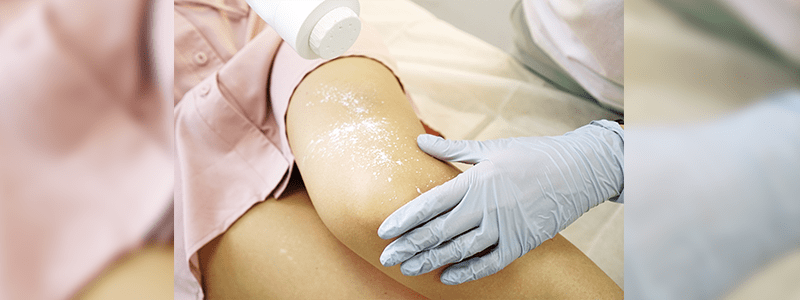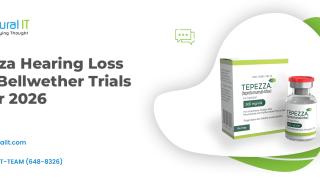J&J's Talc Verdict Bid Rejected, Damages Reduced To $2.1B
J&J's Talc Verdict Bid Rejected, Damages Reduced To $2.1B

Introduction
Johnson & Johnson's (J&J) bid to reverse a jury verdict over its talcum powder was rejected by the Missouri appeals court, but the damages award was reduced to $2.12 billion from $4.69 billion.
The initial verdict was given in July 2018 by a state court jury to a group of 22 women after finding that their baby powder and other talc products were the cause of increasing the risk of cancer, which they knew yet failed to warn consumers.
In the recent bid, J&J maintained that the trial was flawed, and the verdict should be overturned, but a panel of judges with the Missouri Court of Appeals rejected those arguments and upheld an award of $500 million in compensatory damages, along with $1.62 billion in punitive damages.
Last month, J&J decided to stop selling its talcum-based products in the U.S. and Canada due to declined consumer demand and misinformation about the safety of the products.
The court, while giving out the verdict, stated that plaintiffs were successful in giving a clear picture that the talc manufacturer was involved in the outrageous conduct as they had an evil motive.
The spokeswoman of J&J stated after the verdict that they are still confident about their talc being safe and free from asbestos, which means it cannot lead to cancer.
The lead lawyer of plaintiffs in his statement after the court's verdict stated that it's high time J&J has to find a fixed solution to resolve all cases for people who have been diagnosed with cancer after using their products for years. After Reuters revealed its investigative report in 2018 about J&J being aware of asbestos in its talc, the talc manufacturer since then has faced intense scrutiny for its baby powder safety.
Talcum powder is made from talc; magnesium, silicon, and oxygen are the main elements of talc. It is one of the most common ingredients of cosmetic products such as baby powder, personal care products, contraceptives, anti-chafing products, deodorants, etc. as it absorbs moisture well and helps reduce friction.
In its natural form, some talc contains asbestos, a known human carcinogen. Regulations were made by the U.S. government in 1973, requiring all talcum powders to be free of asbestos.
Some of the most popular talcum powder products are the following- Johnson's Baby Powder, Shower-to-Shower (Johnson & Johnson) & Cashmere Bouquet (Colgate-Palmolive).
Johnson's Baby Powder, one of the most popular products containing talcum powder, is linked to increasing a woman's risk of ovarian cancer if she uses it regularly in the genital area. In a few cases, the cancer tissue was studied using an electron microscope and was found to have talc in it, which supported the claim that the cancer was caused by the body powder and increases the talc-related cancer risk.
The risk of asbestos has been associated has been known since the early 1900s. When asbestos fibers get accumulated in the person’s lung it leads to mesothelioma. As of now, there is no cure for this form of cancer, which develops inside the person's body like a slow poison.
Nearly 19,000 talcum powder and shower-to-shower lawsuits are filed against J&J in courts nationwide, each raising similar claims about the presence of asbestos and the risk of cancer. Most of the lawsuits are consolidated under multidistrict litigation, MDL No. 2738, whereas some are pending in state courts in Pennsylvania. Lawsuits are also pending in a California coordinated proceeding as a part of Judicial Council Coordinated Proceeding No. 4877.
Earlier, U.S. District Judge Freda L. Wolfson randomly selected 1,000 talcum powder cancer lawsuits for bellwether discovery procedures, initiating the first step towards the preparation for early trial dates in the federal court system.
Judge Wolfson announced the list of randomly selected cases on June 4, through a court order. According to the order, the plaintiffs named in the list of cases should produce a fully complete and verified Profile Form within 90 days, provide medical record retrieval authorizations, and promptly order and produce core records about their claims.
The way for the talcum powder lawsuits to proceed was cleared in April, after the attempt by the defendant, Johnson & Johnson (J&J), to exclude plaintiffs’ expert witness testimony was rejected. Judge Wolfson indicated that the evidence and opinions offered were sufficiently reliable under the federal Daubert standard to present the case to the juries.
Last month, J&J decided to stop selling its talcum-based products in the U.S. and Canada due to declined consumer demand and misinformation about the safety of the products.
Talc is a naturally occurring silicate mineral mined from rock deposits in the Earth’s crust. In 2019, three companies operated talc mines in the United States, and they produced 630,000 tons of talc valued at about $24 million, according to the U.S. Geological Survey.
Manufacturers crush, dry and mill talc into a fine, soft, white powder called talcum powder. The powder serves as a lubricant and adds softness and shine to products. It prevents caking, absorbs moisture, and makes products feel silky. This makes it a common ingredient in cosmetics, food additives, and industrial products.
People have been using talc as far back as ancient Egypt. Ancient Assyrians and Native Americans also used talc for a variety of purposes. Talcum powder has cosmetic and industrial uses.
The cosmetic talcum powder product most recognized by consumers is Johnson’s Baby Powder. In 1893, Johnson & Johnson released Johnson’s Baby Powder after discovering it could prevent diaper rash. Then companies began marketing it to women. They said talc was good for controlling odor and moisture in the genital area.
The International Agency for Research on Cancer (IARC) says talc contaminated with asbestos is “carcinogenic to humans.” But the agency, which is a division of the World Health Organization, also specifies that asbestos-free talc is “not classifiable as to carcinogenicity in humans,” according to the agency’s June 2020 monographs on the identification of carcinogenic hazards to humans.
Scientific literature going back to the 1960s has suggested a link between talcum powder and ovarian cancer, but there hasn’t been a conclusive determination, according to the FDA. Women in these studies used talcum powder around the genital area.
The IARC has declared the use of talc in the genital (perineal) region as “possibly carcinogenic to humans” according to the agency’s June 2020 monographs on the identification of carcinogenic hazards to humans.
The American Academy of Pediatrics has voiced concerns about baby powder for decades. The organization recommends against the use of talcum powders on babies because it can cause severe lung damage and breathing problems if inhaled.
More than 17,000 talcum powder and shower-to-shower lawsuits are filed against J&J, which are consolidated under multidistrict litigation MDL No. 2738, each raising similar claims that the manufacturer knew about the presence of asbestos and the risk of cancer, yet failed to warn consumers.




